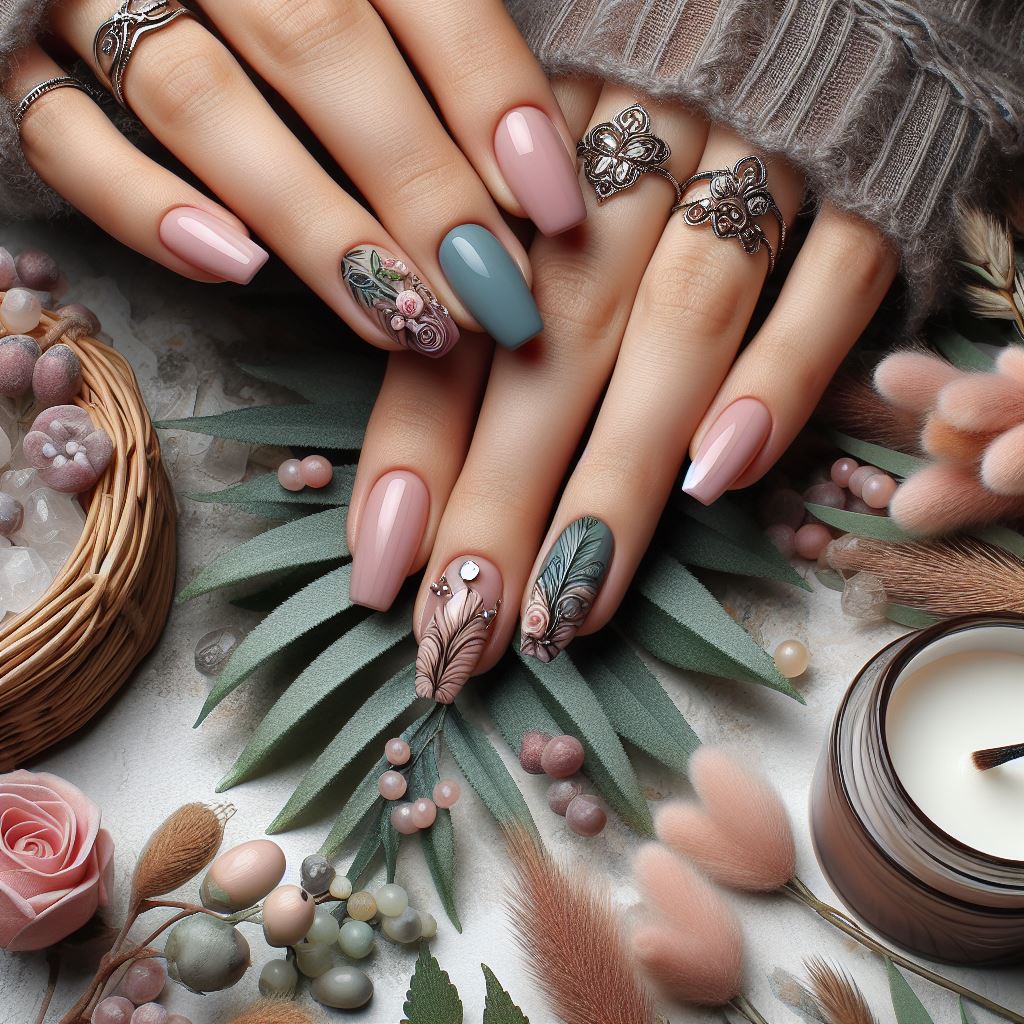
Hello there, nail enthusiasts! If you're someone who, like me, loves adorning their nails with the coolest styles and trendiest colors, then this is the guide for you! But this isn't just about painting those nails pretty. This post is all about understanding, protecting, and nurturing your nails so they can stand strong beneath whatever wonderful colors you decide to splash on them.
Now, let's think about something for a moment, shall we? We invest in the best shampoos to protect our hair, treat ourselves to soothing face masks for our skin, but often, we neglect taking care of our nails beyond a swish of paint now and then. By the end of this article, I'm hoping we all realize the importance of giving our nails the TLC (Tender, Love, and Care) they deserve.
Get ready, folks, to dive deep into the mysterious world beneath those coats of polish to understand the anatomy of the nail, learn about common nail problems, explore practical pointers for maintaining healthy nails, and more. So, polish your knowledge as you would your nails - slowly, carefully, and with utmost attention. Let's embark on this journey to 'nail' the art of nail care together!
Understanding The Anatomy of the Nail
The fascinating world of nail anatomy is much more than meets the eye. Isn't it incredible that something we often take for granted, like our nails, has such a complex structure that plays an essential role in our everyday lives? So, let's dive in and dig some deeper. We'll shed light on this overlooked part of our body, and trust me, by the end of it, you'll never look at your nails the same way again.
Nail Plate
The nail plate is what we commonly refer to as the 'nail.' It’s the hard and translucent portion that protects the fingertips. This protective shield is made up of layers upon layers of keratin, a type of protein that’s also found in our hair and skin. The nail plate keeps our sensitive fingertips safe, but it also acts as a handy, built-in tool for tasks like scratching an itch or peeling off a stubborn sticker.

Nail Bed
Beneath the nail plate lies the nail bed, a skin surface that nourishes the nail plate. Its importance is often overlooked, but maintaining a healthy nail bed is crucial for overall nail health. Imagine the nail bed as the supportive mattress underneath a comfortable bed. Without it, the bed (or in this case, the nail plate) wouldn't hold up too well. Understandably, injuries or infection to the nail bed can lead to nail deformities or more severe complications.
Cuticle
When you look at your nails, you'll notice a thin, skin-like layer at the base. That's the cuticle, and it’s an integral part of nail anatomy. Contrary to popular belief, the cuticle isn't just 'dead skin' that can be scraped off without consequences. On the contrary, it's a protective barrier that keeps bacteria from invading the nail matrix, where new nail cells are made. So, give that 'dead skin' the respect it deserves!
Lunula
Have you ever wondered about that small, whitish, half-moon shape at the base of your nails? Say hello to the lunula, another overlooked but critical part of nail anatomy. Although it may not seem important, the lunula actually plays a crucial role in nail growth and health. Visible on the thumb and possibly some other fingers, it's a glimpse into the hidden part of the nail matrix. Damaging the lunula can seriously affect nail growth.
By understanding the basics of nail anatomy, you can appreciate the complexity of your nails and learn how to take better care of them. After all, healthy nails are the first step towards beautiful nails. Next time when you look at your nails remember, you're looking at a perfect combination of beauty and utility, meticulously designed by nature. And doesn't that just nail it?
Signs of Healthy and Unhealthy Nails
Who doesn't wish for picture-perfect nails? As someone who adores nail art and pays a great deal of attention to nail care, let me tell you a little secret. The most stunning nails aren't always the ones with the fanciest paint jobs but are those that are genuinely healthy. So how can you tell if your nails are on the healthier side or waving a white flag in distress?
Signs of Healthy Nails
There's more to healthy nails than them being long and robust. Here's a checklist of qualities indicative of healthy nails:
- Smooth and Consistent Color: Your nails should have an even surface without ridges, dents, or areas of unusual color or shape.
- Consistent Growth: Your nails should grow continually. The average growth rate is about 3.5 millimeters per month.
- No Separation: Healthy nails don't separate from the skin at the nail base, a condition known as onycholysis.
- Clean and Dirt-Free: Nails, as well as the skin surrounding them, should be free of dirt or debris.
If your nails check all these boxes, you're definitely on the right track. But what if they don't?
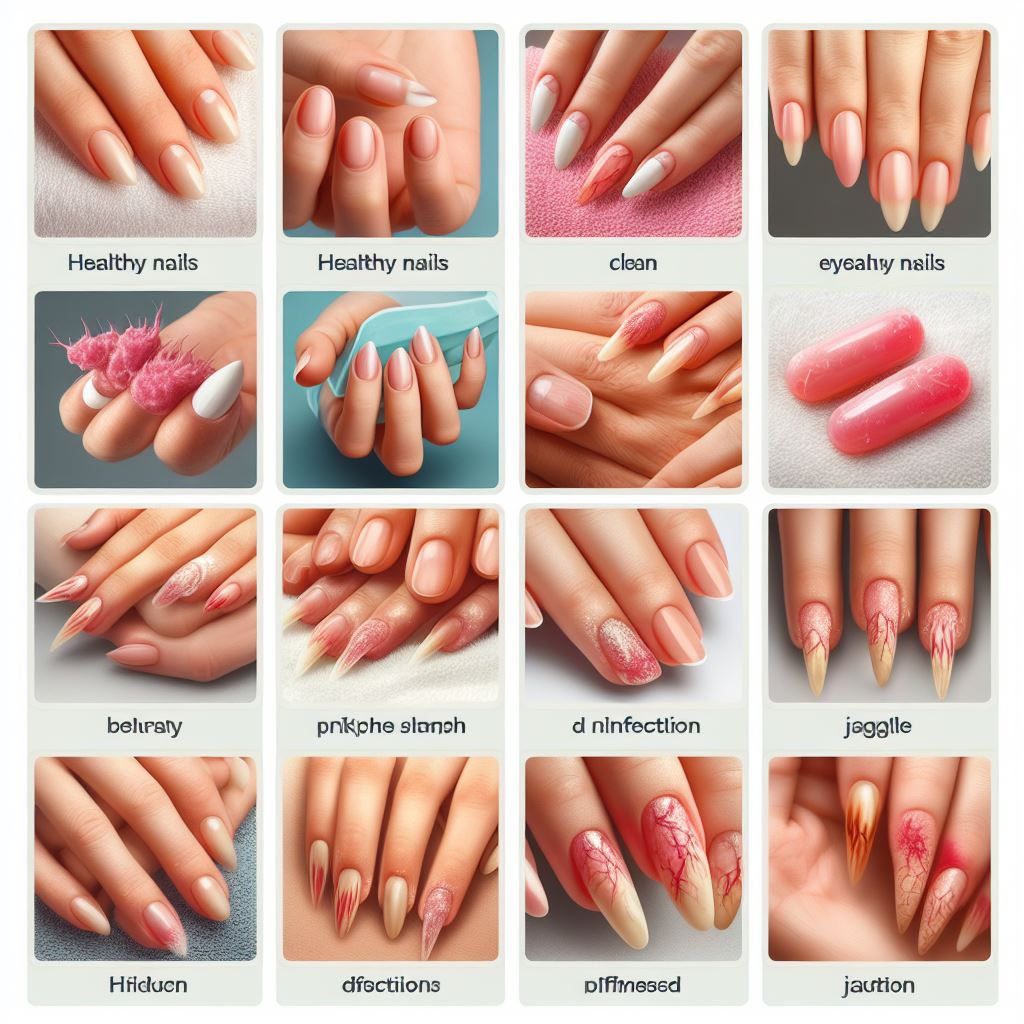
Signs of Unhealthy Nails
Unhealthy nails aren't just unsightly; they could also be indicators of underlying health issues. Here are a few red flags to watch out for:
- Changes in color: Yellow, white, or green nails can signify numerous conditions, including fungal infections or even serious diseases such as liver disease.
- Changes in shape: Nails that are thick, brittle, or paper-thin might indicate nutritional deficiencies or thyroid disease.
- Pain or discomfort: If your nails hurt or feel uncomfortable, it could be an infection, an allergic reaction, or psoriasis.
- Bleeding or discharge: Both are clear signs of infection.
In the end, following a good nail care routine is integral to preventing most nail problems. Trim your nails regularly, maintain hygiene, and be gentle when you're buffing them. Remember, your nails aren't just for showing off striking nail arts; they're also mirrors reflecting your overall health status! So, pay attention to them just as you would any other part of your body. After all, a little nail love goes a long way!
Common Nail Problems and How to Treat Them
Hands up, who doesn’t love having healthy and strong nails? They're often considered a sign of good health and a well-groomed appearance! But nails can encounter a variety of issues, from infections to plain old brittleness. Today, let's talk about some common nail problems and how you can treat them effectively.
Nail Fungal Infections
It might make you squirm, but nail fungal infections are pretty common. You'll know you're dealing with one if you see white or yellow spots under the tip of your fingernails or toenails, and over time, they may thick, crumble at the edge or lead to a foul odor.
- Treat it: A visit to your doctor is the first step. They may suggest certain antifungal creams or tablets. If the infection is severe, they might also recommend nail removal.
Ingrown Nails
Ouch! That's generally the reaction when you get an ingrown nail, an ailment that generally impacts the toes. In this case, your nail grows into the skin causing pain, redness, and inflammation.
- Treat it: Simple home remedies include soaking the affected toe in warm water and then placing a piece of cotton under the ingrown edge to help it grow out. But if it's really painful, see your doctor - you may need a minor surgery to remove the ingrown portion.
Nail Psoriasis
Did you know that up to half of those suffering from psoriasis may also get nail psoriasis? This condition can cause pitted, discolored, or crumbly nails.
- Treat it: It's important to see a dermatologist or a doctor for this. They can suggest topical treatments like high potency corticosteroids, calcipotriene, tazarotene, or anthralin. The type of treatment will depend on the severity of your nail psoriasis.
Brittle Nails
If your nails are thin, weak, and prone to cracks and breaks, you might be suffering from brittle nails.
- Treat it: Regular moisturizing is key. Apply a lotion or cream that contains alpha-hydroxy acids or lanolin. Don't forget to wear gloves while doing dishes or other wet jobs. And if the brittleness persists, do consult with your doctor to rule out any underlying health issues.
Remember, your nails serve more than a cosmetic function - they can also reveal warning signs about your overall health. Hence, keep an eye (or rather, finger! ) on them and promote your nail health as part of your self-care routine. If in doubt, consult your healthcare professional. Keep shining with your healthy nails, you!
Practical Tips for Maintaining Healthy Nails
Our nails are a reflection of our overall health. Healthy nails not only signify that your body is in good shape, but also add beauty to your hands. However, achieving and maintaining healthy nails needs more than just regular manicures . Here's a rundown on some practical tips you can follow to keep your nails in tip-top shape.
Keep Your Nails Dry and Clean
This is arguably the most important aspect of nail care. Keeping your fingers dry prevents the bacteria and fungi from multiplying, and you can prevent nail infections or discoloration just by doing this one thing. Similarly, keeping them clean prevents the build-up of dirt and microbes. It might seem daunting initially, but trust me, this habit can significantly improve the health of your nails over time!
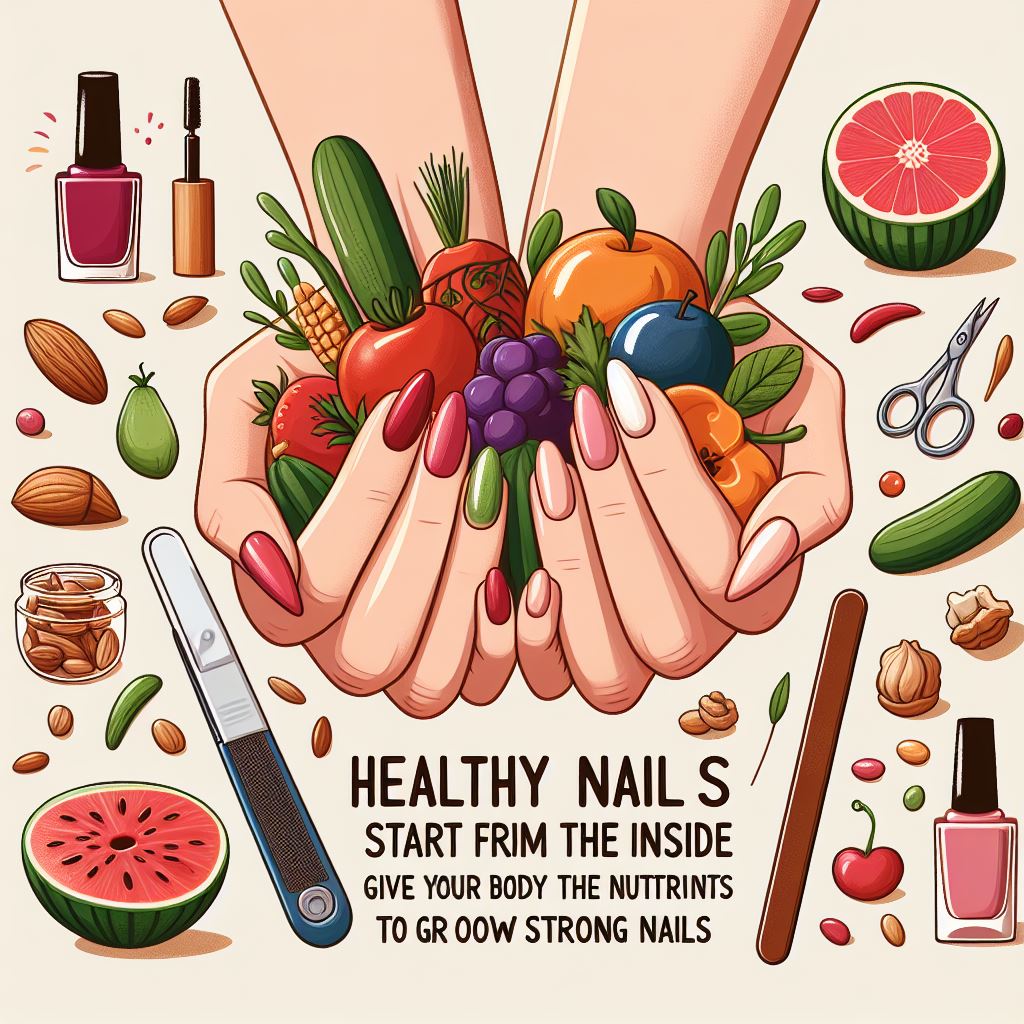
Trim Your Nails Regularly
Trimming and filing your nails is not just about aesthetics; it's necessary for their health as well. Regular trimming can prevent the breakage and splitting of.
Importance of Proper Nail Care in Overall Health
Nails, those hard protective layers at the tops of our fingers and toes, are often overlooked. When it comes to overall health, the focus is usually on diet, exercise, and mental wellness; however, our nails deserve attention too! Often mirroring our health, our nails can signal potential issues in the body. Full of surprising insights, our nails deserve proper care and understanding.
The significance of nails and health
Just as the white part of your eye or your tongue can reflect your health status, so too can your nails. Changes in their color, texture, or shape may be signs of an internal health condition. Here are a few examples:
- Yellow nails can be a sign of lung conditions or a fungal infection.
- Pitted or rippled nails might indicate psoriasis or inflammatory arthritis.
- Blueish nails may suggest low oxygen levels in your blood.
Reasons to maintain good nail hygiene
Now you may ask, why should I fuss about nail health? Well, I've listed a few reasons why:
- Prevents Infections: Keeping your nails clean and trimmed helps prevent bacteria from growing under the nails.
- Reflects Personal Hygiene: Well-manicured nails make a positive impression about your hygiene to others.
- Boosts Self-esteem: A good manicure can also make you feel more confident, impacting your mental health positively.
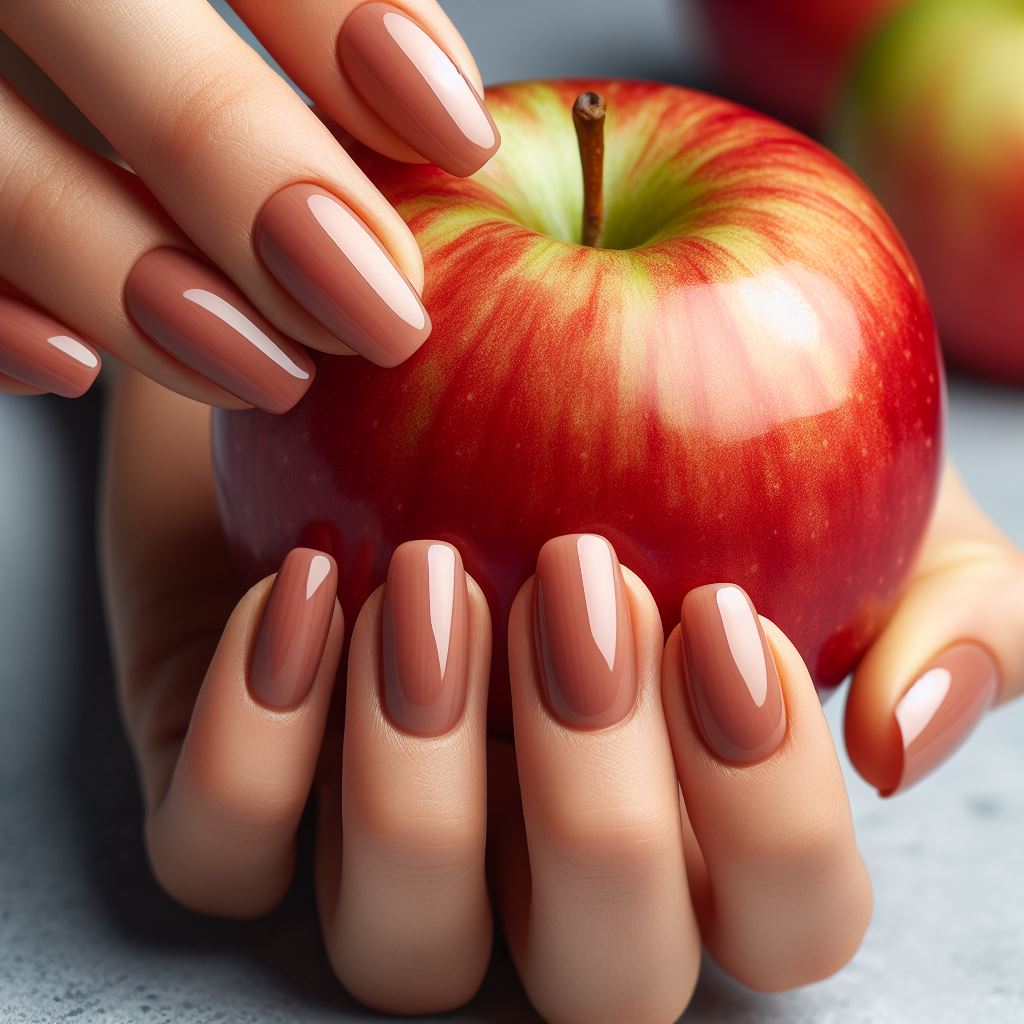
Key tips for better nail care
A simple nail care routine can do wonders for your nails and overall health. Here are some effective tips:
- Trim your nails regularly.
- Wear rubber gloves when doing household chores.
- Avoid biting your nails.
- Apply a moisturizer regularly to prevent dryness and breakage.
- Include a diet rich in protein, biotin, and vitamins E and C for healthy nails.
"Just as with every part of the body, our nails need TLC too!"
I must stress that caring for your nails won't only enhance your personal appearance. It's also a practical way to stay alert to possible health issues. So, let's put more thought into our nails and their care – for the sake of your wellbeing!
Guided Steps for an At-home Manicure
Gather Necessary Supplies
Before we start, let's make sure we have everything we need. I find that gathering all my supplies ahead of time makes the process so much smoother. Plus, who wants to dig through drawers for a pair of nail clippers once they've already started, right? Here's a quick rundown of what you'll need:
- Nail clippers
- Nail file
- Bowl of warm water
- Cuticle pusher
- Base coat
- Nail polish of your choice
- Top coat
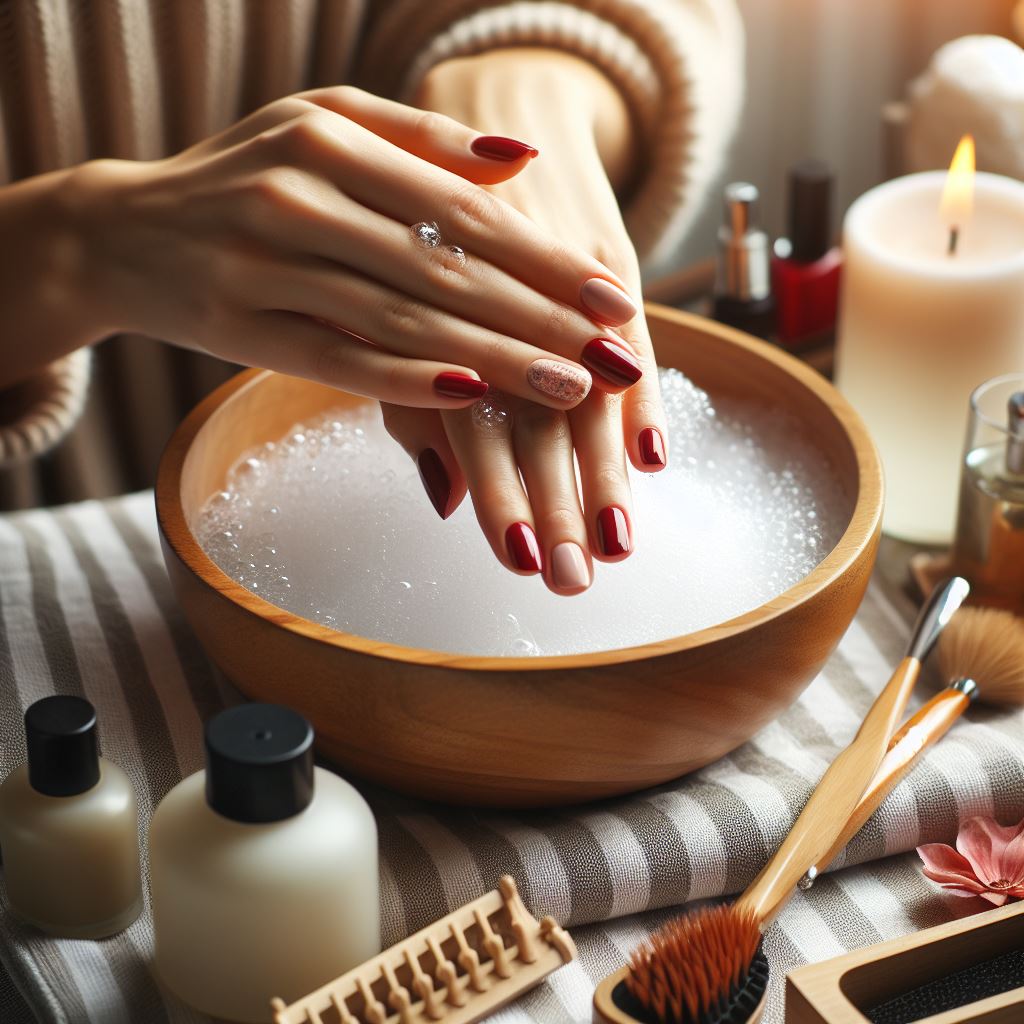
Prep Your Nails
Now, it's time to prepare our canvas! First, make sure your hands are clean and dry. Remove any old nail polish that might still be clinging on, using a gentle, acetone-free remover. It's important for your nails to be clean and polish-free for the best results!
Trim and File
Up next, let's tackle shaping our nails! Using a pair of nail clippers, trim your nails to the desired length, but remember to keep them all even. Afterward, grab a nail file and gently smooth any jagged edges and shape your nails. A pro tip that I swear by is to file in one direction only - it really helps to prevent splits and cracks!
Soak and Push Back Cuticles
Here's my favorite part Soaking my nails always feels like a mini spa session! Fill a bowl with warm water and soak your nails for about 5-10 minutes. Once they've softened, use a cuticle pusher to gently push back the cuticles. It's okay if you're not perfect at it the first time, practice makes perfect, as they say!
Apply Base Coat
The next step is very important, but often overlooked. Applying a base coat not only protects your nails from potential staining but also provides a smooth surface for your polish to adhere to. Trust me, this small step can make a huge difference in the longevity of your manicure!
Apply Nail Polish
Now for the fun part - color! Whether you're a fan of bold reds, soft pastels, or funky nail art, this is where you get to express yourself! When applying the polish, remember to start from the base and stroke upward. It's best to go for thin, even coats and use three strokes (one on each side and one in the middle). Usually, two coats are enough to give a vibrant color.
Apply Top Coat
Last but not least, seal in your hard work (and fabulous color choice) with a top coat. This provides additional shine and extends the life of your manicure.
And there you have it, you've just given yourself a salon-worthy manicure right from the comfort of your own home! Remember, practice makes perfect, the beauty is in the process as much as the result. Enjoy your me-time, and let your nails shine!
When to See a Dermatologist
I always believed in the age-old saying, 'skin-deep beauty,' and took every step to maintain healthy and glowing skin. But, in reality, our skin can be a tricky thing to care for and sometimes, despite all of our efforts, troublesome skin conditions can crop up. If you're in the same boat, wondering 'When to see a dermatologist,' you're in luck! Today, I'm going to share some indications that suggest it's high time to book your dermatologist appointment.
Are you aware that not every skin issue needs a dermatologist's attention? Yes, that's right! Minor issues such as occasional pimples and tan can be resolved with proper skincare routine and lifestyle changes. However, if you observe the following conditions persisting, it's time to seek professional help:
- Your skin problem isn’t healing: You've tried several home remedies and over-the-counter medications, but the issue persists or, worse, increases.
- Severe acne: If your face or body is swamped with painful and embarrassing acne, a dermatologist can help you with strong prescription medication treatments.
- Rash or skin irritation: Skin problems like psoriasis, eczema, or prolonged rash, which won't go away with regular creams or lotions, warrant a visit to the dermatologist.
- Noticeable changes in nails or hair: Both hair and nails can signal health problems. Unexpected hair loss, brittle nails, or changes in their color or texture may need a dermatologist's attention.
Remember, your skin is a mirror that reflects your overall health. Don’t take potential signs lightly.
I can't stress this enough, but early detection is key in treating any skin condition effectively. So, don’t delay and visit a dermatologist if you notice any of the above symptoms.
Trust your skin with the specialists! After all, it's not just about looking good but feeling good too and with healthy skin, you're sure to feel on top of the world!

Conclusion
There you have it, a comprehensive guide to nail care. Nails might be a small detail, but they certainly play a big role in our overall health and beauty. By understanding and caring for your nails correctly, you're not just investing in your appearance, but also in your health and confidence.
If the DIY route seems overwhelming, you don't have to go it alone. You deserve to sit back, relax, and let a professional handle it. Try out a professional service like the ones offered at Nina Nailed It and experience the expertise, passion, and flawless results firsthand. Remember, your nails can be a powerful statement of style and self-expression-- let's make them truly fabulous!
So that's it for us queens. Keep those nails keeping and keep shining. No matter where you're starting from, with the right care, tips, and methods, stunning, healthy nails are only a manicure away!
Frequently Asked Questions
-
How can I keep my nails healthy?
To keep your nails healthy, you should: 1. Keep them clean and dry, 2. Trim them regularly, 3. Moisturize your nails and cuticles, 4. Avoid using harsh chemicals, and 5. Wear gloves while doing household chores.
-
What are some common nail problems and how can they be addressed?
Some common nail problems include brittle nails, yellow nails, and nail fungus. Brittle nails can be addressed by moisturizing them regularly and avoiding excessive exposure to water. Yellow nails can be treated by using lemon juice or whitening toothpaste. Nail fungus requires medical treatment, so it is best to consult a doctor.
-
How can I strengthen my nails?
To strengthen your nails, you can: 1. Maintain a healthy diet, 2. Take biotin supplements, 3. Avoid using nails as tools, 4. Apply a strengthening nail polish, and 5. Keep your nails properly moisturized.
-
Are there any natural remedies for nail care?
Yes, there are several natural remedies for nail care. Some examples include: 1. Soaking nails in olive oil, 2. Applying coconut oil to moisturize nails, 3. Using lemon juice to remove stains, and 4. Massaging vitamin E oil into cuticles for nourishment.
-
How often should I get a professional manicure?
The frequency of professional manicures depends on your personal preference and lifestyle. However, it is generally recommended to get a professional manicure every 2-4 weeks to maintain healthy nails and cuticles.